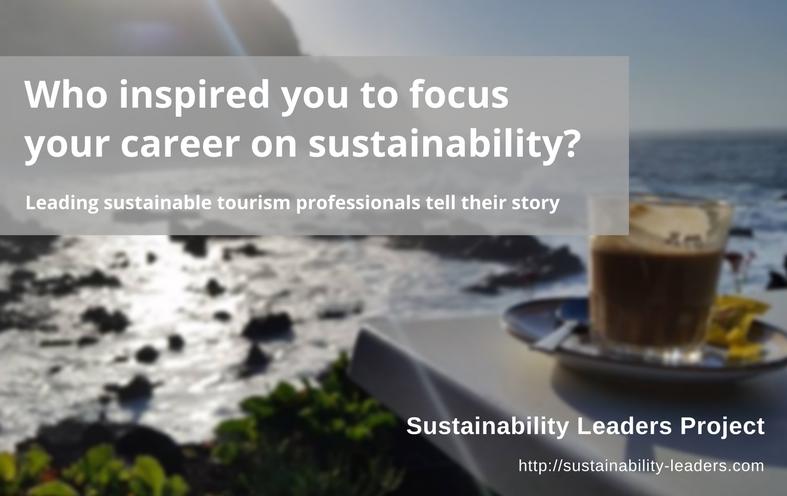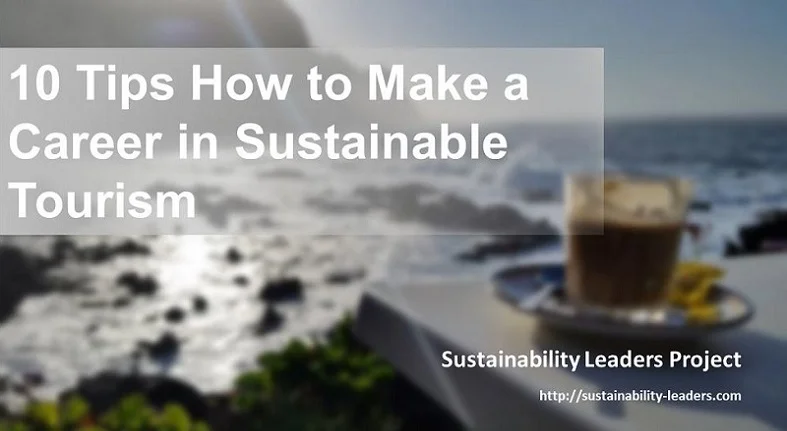
Sometimes, in our daily routines and professional lives we become so focused on what we do and how, that we forget the broader picture: why we chose this particular career in the first place. Who inspired us to do what we do and become who we are?
In our series of interviews with tourism and sustainability professionals, sometimes we ask those leading researchers, tourism managers and entrepreneurs who or what inspired them to focus their career on sustainability.
In this post we’d like to share some of the answers and stories with you. Hopefully you’ll find them inspiring and will feel encouraged to continue your work of making your own tourism businesses or destination more sustainable.
Which persons or organizations have inspired you to focus your career on tourism and sustainability?
David Weaver, Australia:
Interview
“I always admired the work of Richard Butler, whose tourism area life cycle model (TALC) created a framework for engaging with issues such as sustainable tourism.
In Australia, I have liked the practical work of Ecotourism Australia, which has developed the most credible ecotourism certification program in the world, and continues to refine this program as warranted by the experiences of its practitioners.
The early work of Green Globe was also influential in getting industry to think about sustainability and in inspiring academics, although it never really gained much actual traction at the time.”
Ariane Janer, Brazil:
Interview
“One of the advantages of getting older is that you can see how things turn out. I tend to follow projects and initiatives I have been part of.
When I researched the Kemp’s Ridley Turtle in Mexico it was on the brink of extinction with less than a 1000 nests per year, less than 1% of the 1947 level. But thanks to long term cooperation between Mexico and the US, numbers rebounded to over 20 thousand in 2012. At the moment researchers are worried again as numbers are falling, which might be an effect of the Deep Water Horizon disaster, but also a decline in their favourite food, the blue crab.
The Golden Lion Tamarin is also an interesting example. The population that was on the brink of extinction in the wild in the 60s, is now already over the target set for 2025. A key problem now is assuring enough protected rain forest and ecological corridors. The protected areas, which are usually private, offer new opportunities for tourism
It is also important to remember that we are all “dwarfs standing on the shoulders of giants”. The Golden Lion Tamarin is now a tourism attraction, because a Brazilian primatologist, Adelmar Coimbra Filho, managed to rally both the Brazilian and the international conservation community to save it.
The Uakari Floating Lodge at Mamirauá, for which I did the original business plan, was built to support economic alternatives in a sustainable development reserve. The reserve was created through the efforts of Marcio Ayres, who did his thesis on the rare and endemic Uakari Monkey. And he was inspired by 19th century explorer Henry Bates, who wrote The Naturalist on the River Amazons.
Geoffrey Wall, Canada:
Interview
“I was fortunate to receive a good education in strong universities in several countries, as well as encouragement to pursue my interests in tourism (as differentiated from hospitality) at a time when little academic attention was being given to this topic. My home discipline, geography, supported the adoption of broad perspectives that spanned physical, human, technological and other dimensions of real-world problems in diverse parts of the world.
Within tourism I have great admiration for the work of my good friend Richard Butler. I have also benefited greatly from exposure to the ideas and occasional collaborations with colleagues at the University of Waterloo, who have encouraged me to place tourism in a broader context.
In particular, I mention Geoff McBoyle, a climatologist, who encouraged me to publish my research on tourism and recreation and later collaborated with me on research on tourism climate change; and Bruce Mitchell, a water resources specialist who introduced me to many aspects of resources management.
Ian Burton, a leading scholar on hazards and, more recently, climate change, emphasized the human dimensions of environmental problems, and put a young academic in touch with novel ideas on human-environment relationships and an international network of scholar.
It is also important to emphasize that I have learned a great deal from my graduate students. It is not possible for a person with limited language skills to work successfully in other cultures in the absence of the inputs and insights of intermediaries. I do not teach graduate students: rather we explore together and learn from each other.”
Peter Gash, Australia:
Interview
Richard Branson and the Virgin Group;
The Disney Group;
All the myriad of smaller family operations that put their heart and soul as well as their financial resources into doing something special for the environment and saving the planet.
Enjoyed this post on organizations and persons who inspired leading tourism professional to focus their career on tourism and sustainability? Spread the word!



